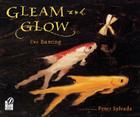Teaching theme can be a real challenge. When kids have trouble, here are a few tactics that I've used.
Give kids a list of themes: I can't say it often enough--this transforms your teaching of theme. When kids have a list of themes in front of them, they can understand the abstract nature of the task. Leave some blank spaces on your lists to add themes as you encounter them in text. (You can find a list in Summarizing, Paraphrasing, and Retelling, or write to me for a copy.)
Use lower level texts for teaching theme: This year, I had wonderful success with Mole and the Baby Bird. Now, this is a very easy text. We read it three times before we looked at the the theme. First we watched this wonderful video version. Then we read it again and sequenced the events. By the third reading, I had gotten to that wonderful point where the readers felt secure enough to speak up, offering their own inferences and interpretations. This was the time to bring up theme.
When kids only talk about theme in reference to stories that are a bit of a stretch for them, they'll always put theme in that fuzzy part of their brain where they store ideas that don't quite make sense. Using easy stories helps to make theme a little more comprehensible.
Don't just use fables: Fables seem like they would be perfect for teaching theme. But the moral of a fable is a shade different from the theme of a story. Morals are stated, and the point of a fable is to teach the moral. Most stories, however, have more layers of meaning. Sticking to fables can give kids the idea that themes will always be stated, which is not necessarily true. (You can tell that I started my career with the literature teachers in middle school! No one stands around the copier in an elementary school debating the difference between moral and theme.)
When in doubt, use an Eve Bunting book: This makes for easy differentiation. Go to the library and check out a selection of Eve Bunting books. Struggling readers can read Sunflower House, which has a stated theme in a story told in verse. Other readers can work with Train to Somewhere or Gleam and Glow. Compare themes across books. What do you notice about Eve Bunting as an author? What themes do you see repeated? (Patricia Polacco is another author whose works would be good for this.)
Raise the level of concern: So one day I earnestly taught about theme. I showed the Powerpoint, discussed examples, shared a story. At the end of the session, I asked students to write down an explanation of theme, or an example of a theme. Not one kid could.
This started a serious discussion about what was happening in class versus what was supposed to happen in class. It made an impact, because the kids tuned in to our next conversations about theme. They wanted to learn! They knew that it was important! (They didn't want to hear me lecture again?) Regardless of the reason, things improved.
Connect to other media: Kids often know more about theme than they know. Every single episode of Star Wars: The Clone Wars starts with a statement of theme. So many kids have some knowledge of theme and how it is expressed in a story. Not that they realize this, of course. "Oh, you mean that screen they show before the episode starts?" they ask. Yes! Other popular shows have strong themes as well.
Tell them a theme: If you're working to have kids try to support a theme, sometimes it helps to give students a theme that goes along with a story, and then have them find reasons to support it. What I love about this is that it often spurs students to come up with a different theme, just to be contrary. If they can support it, that's great!
Keep track of themes throughout the year: Make a poster to keep track of themes that you uncover in stories.
Enjoy teaching theme! It's a wonderful journey!



No comments:
Post a Comment